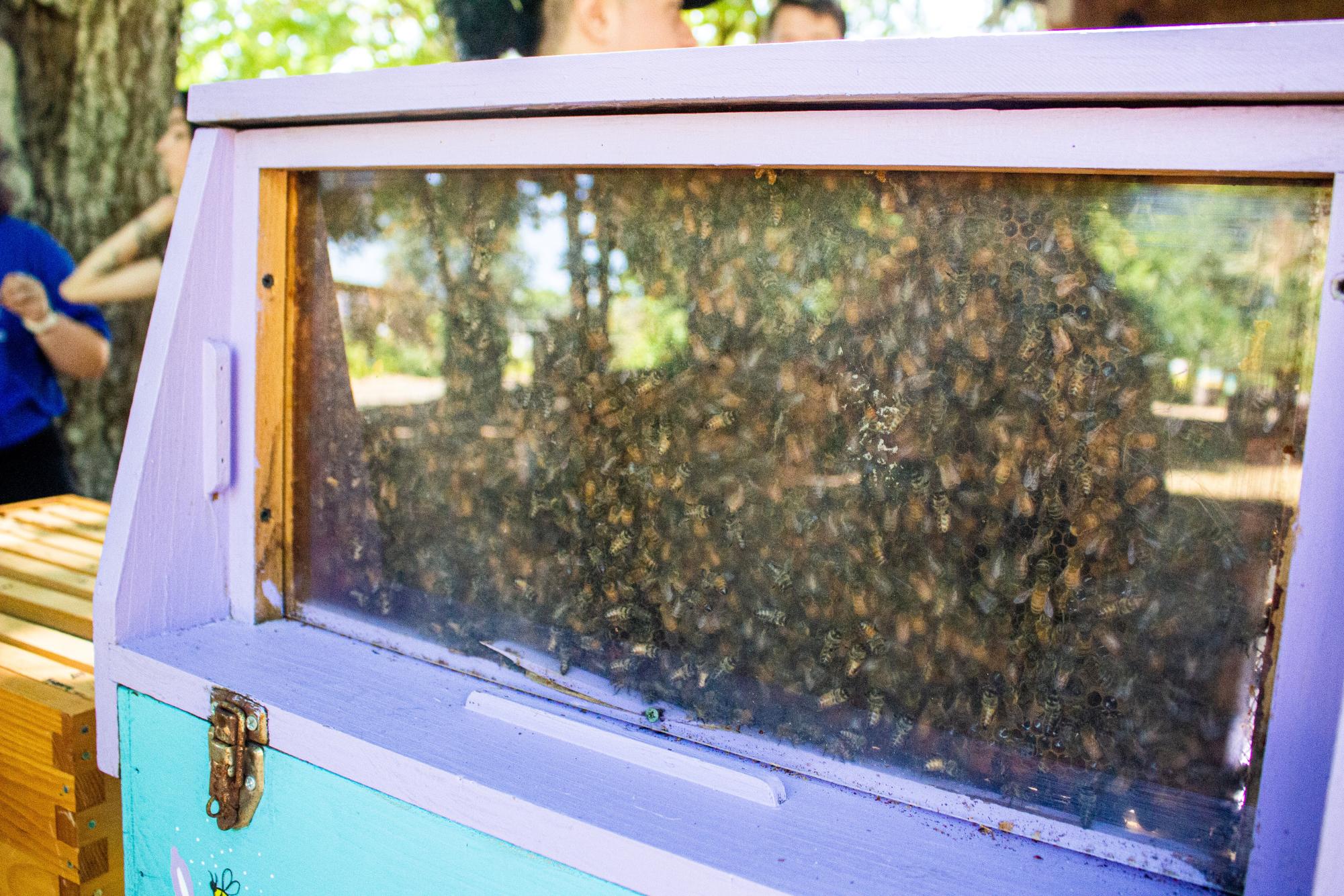Oregon State University will bee one of four universities researching foulbrood disease in honey bees, after receiving a $4.2 million grant from the United States Department of Agriculture.
Foulbrood disease is a deadly disease that affects larvae in honey bees, and originated in Europe. While foulbrood disease has been killing honey bees around the country for hundreds of years, in the past 15 years there has been a major spike according to Ramesh Sagili, honey bee specialist and professor in the Department of Agriculture at OSU.
Because of this, the U.S. has lost 30% of their honey bee colonies. This has affected agriculture, pollination and more. The bees that are infected with this disease die when they are young, which prohibits colonies from growing.
“It’s a comprehensive effort (and) a multistate effort where we are trying to comprehensively address this problem,” Sagili said.
The team at OSU will be led by Sagili, and will consist of four research assistants, 10 undergraduate students and four graduate students. Some of the students will travel with the team to California at the start of the research.
OSU will be partnering with Mississippi State University, Washington State University and University of California, Davis to conduct the research, according to an OSU press release.
This research is set to examine how foulbrood spreads through colonies, and what things contribute to it. The current grant will last for four years, according to Sagili.
“We know some basics about this disease, but it flares up in some years and then subsides in other years,” Sagili said. “So, we don’t know exactly what (the) triggers or continuing factors of this disease (are).”
Gilbert Uribe, the pesticides program manager at the Oregon Department of Agriculture, has worked with OSU on projects surrounding pesticides and how they affect honey bees.
“This funding will provide an opportunity to create larger scale research into the causes of European foulbrood,” Uribe said.
Uribe is not currently involved in this project, but he hopes that the research will help create more understanding surrounding the disease and will help combat this disease to a level that benefits both honey bees and beekeepers.
“I think it’s really helpful to have that kind of level of understanding, especially when, you know, the honey bees aren’t localized to a small area anymore, things are moving at a larger scale, and so we need these larger scale type of projects that are going to be tracking the movement in real world scales in movement and time,” Uribe said.
To begin the research, there are a couple different hypotheses the team will be working on. One of them is the effect of nutrition on the bees. They will look at different systems and the way they provide nutrition to the bees, and see if some bees are more compromised because of their nutrition. Having a compromised system because of nutrition may put the bees at more of a risk for foulbrood.
They will also be looking for different strains of the bacteria that they don’t currently know about, to examine if new strains are one of the reasons for the disease becoming more serious. In addition, they will examine if the disease has become resistant to antibiotics, which would be a cause for concern.
Joe Maresh, president of the Oregon State Beekeepers Association, currently has 40-60 colonies for “small scale” pollination and works with Foothills Honey Company, where he helps transport bees. He has been involved with bees since 2000.
Maresh spoke on how some beekeepers treat immediately with antibiotics because they are expecting a situation where it would be needed, but that he does not treat unless the problem is prevalent.
“The label use of the antibiotic is for treating when you see it,” Maresh said. “And I’m not sure about if that’s true with all antibiotics, but that’s true with the antibiotic that I use.”
There have been many crops affected by the loss of honey bees, but the biggest affected crop has been blueberries. After bees pollinate almonds, the best crop almost every year, they go to blueberries. All four states conducting research are producers of blueberries.
“Honey bees do not do real well on blueberries,” Maresh said. “It’s very hard for them to get in and pollinate the flower because of the way the flower is shaped.”
According to Sagili, because of this speculation, the team is going to examine how blueberries may be affecting the disease. They will be “tagging” some of the bees that come from blueberries and examine them while they are pollinating in different crops, to see whether or not “cropping systems” contribute to the spread of foulbrood within the bees.
In the first two years of the grant, the team is hoping to have tested all of their hypotheses and understand what’s contributing to this disease. In the next two, they would hope to be able to come up with the “best management practices” for beekeepers to implement with their bees to hopefully decrease the disease.
“That’s the main (goal) of this project is trying to identify those factors that are responsible, that are contributing as triggers for this disease,” Sagili said.
The loss of honey bees through this disease has a large range of impact, besides just the negative repercussions on the environment. Several crops including almonds, chiles, pears and more seed crops have been impacted because the bees are prohibited from pollinating.
“Pollination is huge,” Sagili said. “It’s about $20 billion worth of pollination that is being done by honey bees in the United States. It’s really important for all food security.”
The workforce surrounding honey bees has also been impacted, including those who take care of bees for a living and those who take part in it as a hobby. When the colonies decline and are no longer able to pollinate to their usual capacity, there is a lasting effect.
“There isn’t just the crops that depend on pollination services, there’s the whole industry around honey bees,” Uribe said. “There’s a ripple effect created by this. You know, it’s the pollination, the food that’s created by the pollination, but then you have the workers caring for the bees, the people who create the equipment for the honey bees (and) the people who transport the bees from place to place.”













































































































